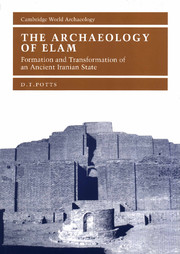Book contents
- Frontmatter
- Contents
- List of illustrations
- List of plates
- List of tables
- Preface and acknowledgements
- List of abbreviations
- Note on transliteration and dating systems
- 1 Elam: what, when, where?
- 2 Environment, climate and resources
- 3 The immediate precursors of Elam
- 4 Elam and Awan
- 5 The dynasty of Shimashki
- 6 The grand regents of Elam and Susa
- 7 The kingdom of Susa and Anshan
- 8 The Neo-Elamite period
- 9 Elam in the Achaemenid empire
- 10 Elymais
- 11 Elam under the Sasanians and beyond
- 12 Conclusion
- References
- Index
1 - Elam: what, when, where?
Published online by Cambridge University Press: 22 September 2009
- Frontmatter
- Contents
- List of illustrations
- List of plates
- List of tables
- Preface and acknowledgements
- List of abbreviations
- Note on transliteration and dating systems
- 1 Elam: what, when, where?
- 2 Environment, climate and resources
- 3 The immediate precursors of Elam
- 4 Elam and Awan
- 5 The dynasty of Shimashki
- 6 The grand regents of Elam and Susa
- 7 The kingdom of Susa and Anshan
- 8 The Neo-Elamite period
- 9 Elam in the Achaemenid empire
- 10 Elymais
- 11 Elam under the Sasanians and beyond
- 12 Conclusion
- References
- Index
Summary
In order to discuss the origins and development of Elam we must first establish where the name comes from and what it signified. This chapter examines the etymology of the name and introduces the reader to the changing nature of its application. It also takes up the fundamental chronological issue which must be tackled before launching into an examination of the material and historical evidence covered here. When do we first find Elam mentioned? How late did Elam exist? Finally, where was Elam? Seeming contradictions between epigraphic, literary and archaeological evidence are investigated which bear on the problem of how ancient observers and modern scholars have located Elam in their treatments of the subject. Finally, the chapter closes with some observations on how and why the meanings of broad geographical and ethnic designations often change in the course of time. For us it is important to realize that the area identified as Elam in one period may not have been the same as that referred to by the same name in another period. These are some of the ambiguities which must be understood before the subject of Elam can be intelligently discussed.
What is Elam?
Elam (Fig. 1.1) is an artificial construct, a name coined by Mesopotamian scribes, gazing across the alluvium towards the Iranian plateau, who imposed it from without on the disparate regions of highland southwest Iran and its peoples.
- Type
- Chapter
- Information
- The Archaeology of ElamFormation and Transformation of an Ancient Iranian State, pp. 1 - 9Publisher: Cambridge University PressPrint publication year: 1999

